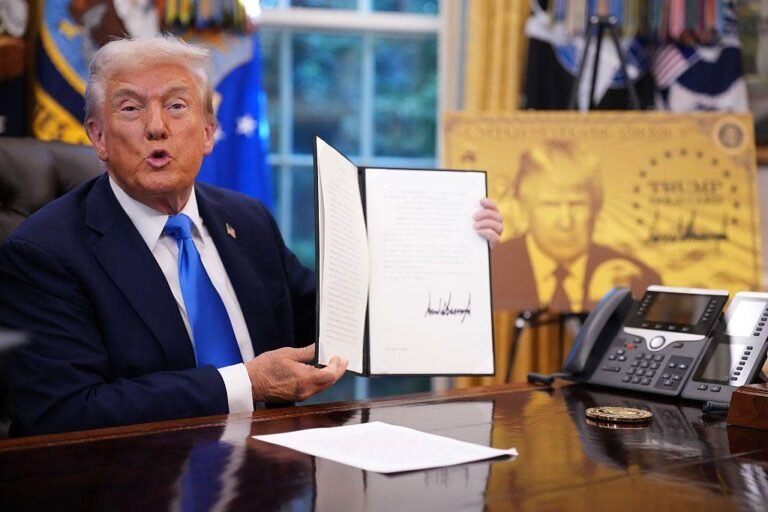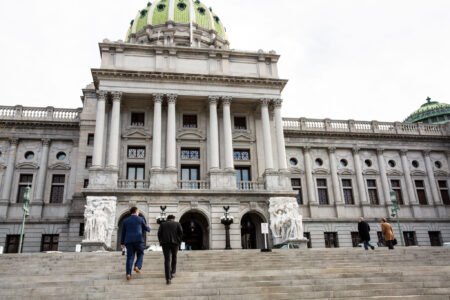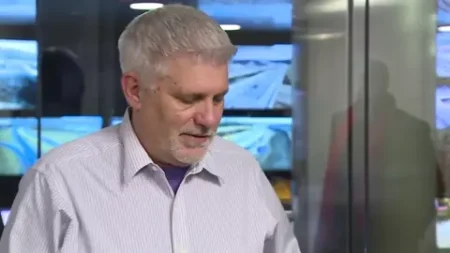President Donald Trump has announced a plan that could bring one of the biggest changes to the U.S. immigration system in decades. He said the government will require foreign skilled workers to pay a $100,000 yearly fee for visas. The proposal targets the H-1B program, which allows companies to hire professionals such as engineers, researchers, and software developers from abroad. Trump described the change as a way to protect American jobs and reduce the country’s dependence on foreign labor. He stressed that businesses should invest more in domestic workers rather than looking overseas for cheaper talent.
The new fee marks a dramatic departure from current policy. At present, companies pay only a few thousand dollars to bring in skilled workers under the H-1B system. Raising that cost to six figures per year would be a major burden for many firms. Smaller businesses and start-ups may struggle to afford such a fee, leaving only large corporations able to participate. Trump has argued that this would ensure that only companies with a genuine need for specialized workers would use the program.
In addition to the H-1B changes, Trump signed an executive order introducing what he called the “gold card” visa. This is designed as an expedited program for highly skilled professionals who want to live and work in the United States. The gold card would cost $1 million for an individual applicant and $2 million if a corporation sponsors the worker. Trump said the program would attract the world’s top talent while generating significant revenue for the government. Officials described it as a premium pathway that balances strict immigration rules with the need to stay competitive in the global economy.
The announcement has drawn a wide range of responses. Supporters say the higher fees would protect American jobs and encourage businesses to hire more citizens. They argue that the system has been too easy for foreign workers to enter, creating competition that makes it harder for U.S. employees to find work. They also believe that charging corporations more will encourage them to invest in training domestic talent.
Critics, however, warn that the policy could harm industries that rely heavily on skilled international workers. Sectors such as technology, healthcare, and research often depend on foreign professionals to fill critical roles. By raising the cost to $100,000 per visa, the U.S. may lose its appeal as a destination for global talent. Some experts say other countries could benefit, as skilled workers may choose places with more welcoming immigration policies. Universities, start-ups, and smaller companies could be hit especially hard, as they may not be able to afford the fees.
The gold card has also raised concerns. While it could bring in top professionals, the million-dollar cost may limit access to only the wealthiest applicants or corporations. Critics say this could create a system where only the rich can gain fast-track entry into the United States, reducing diversity and shutting out talented individuals who cannot afford such high costs.
Legal challenges are likely if the proposal moves forward. Immigration lawyers and advocacy groups may argue that the fees are excessive and place an unfair burden on both workers and employers. The government would also need to create systems to collect and manage the new payments, adding complexity to an already strained immigration process.
Trump has positioned the plan as a way to balance the need to attract the best talent with the goal of protecting American workers. He believes that raising fees will ensure companies think twice before looking overseas for labor. At the same time, he says the gold card will give the United States a tool to compete for exceptional professionals who can contribute to the economy.
For now, the proposal has sparked intense debate. Some Americans welcome the idea as a bold step toward job security, while others worry it could damage the nation’s reputation as a place of opportunity. Businesses are weighing the costs, and policymakers are considering how such changes would affect the economy. The outcome will depend on how lawmakers, companies, and the courts respond in the coming months.







